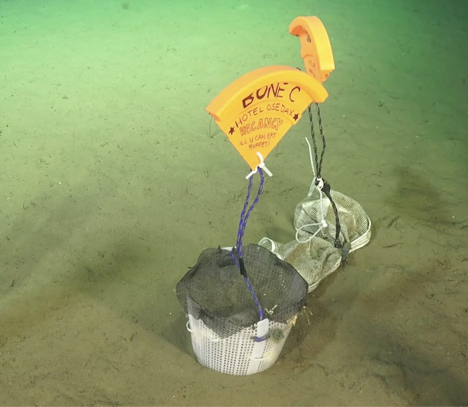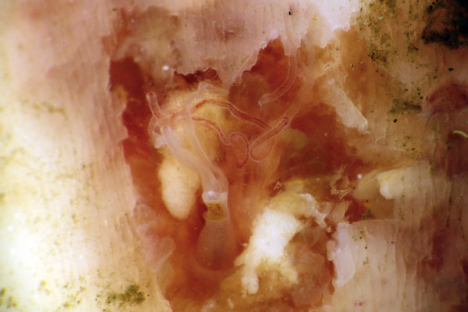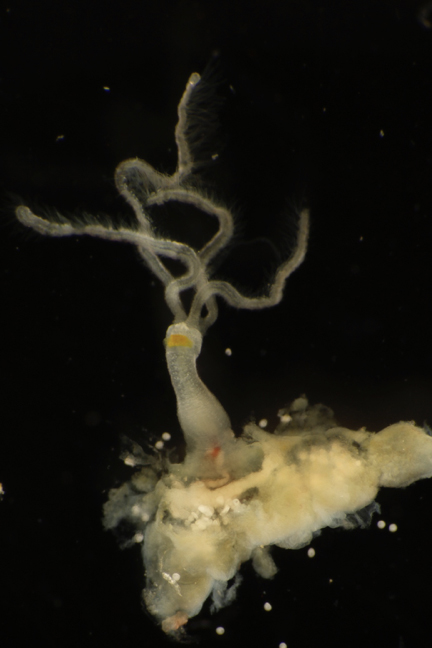The Remotely Operated Vehicle dives during this expedition have been fascinating. Some of the creatures the experts have been observing seem otherworldly, even eerie. It is not unlikely that the brilliant H.R. Giger got his inspiration for the extraterrestrial monster in 1979’s Alien from the planktonic crustacean Phronima. Perhaps it is lucky that the Swiss artist did not think of Osedax when he designed the character, or the movie would have been even more terrifying. The Latin word “Os” means bone, while “Edax” means to devour. Osedax is a bone-eating worm.
Dr. Greg Rouse is able to translate fascination and curiosity for such oceanic critters into knowledge and a deeper understanding of our planet’s most intimate dynamics. Osedax is a perfect example of how natural cycles can be subtle, yet indivisibly linked, because the way these animals take advantage of osseous matter is awe-inspiring.
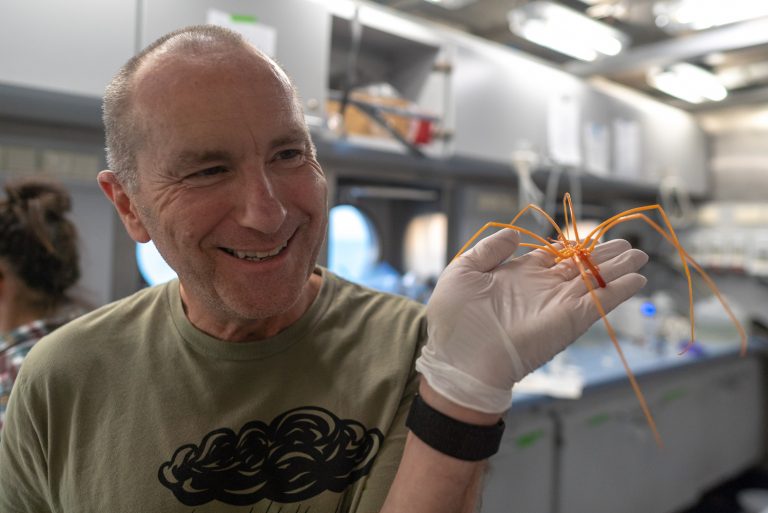
On any given day, a whale may reach the end of its life and sink to the depths of the ocean. Its bones will be stripped of the flesh by different kinds of predators, and the other remains will come to rest in the darkness of the deep sea. Experts used to think that whale bones would take decades to decompose, but that was before they knew of Osedax, an organism that we now know has existed on Earth for longer than whales, feasting on the bones of animals now extinct. “Some people were saying that Osedax is a specialist for whales, but I thought that there are other bones, and there have been fish bones for many millions of years,” says Dr. Greg Rouse, professor of Marine Biology in the Marine Biology Research Division at Scripps Institution of Oceanography. “Whales are not very old, they have existed for about 50 million years. We estimated the age of Osedax with a molecular clock and some were much older, which means they were eating fish bones or extinct animals.”
Dr. Rouse tested this finding by depositing some tuna and swordfish bones on the deep seafloor, and then waiting for six months. What he found demonstrated that Osedax is not a fussy eater. Today he knows that this highly ambitious organism will go through any kind of bone: whale, fish, cattle, poultry, turtles and possibly even human.
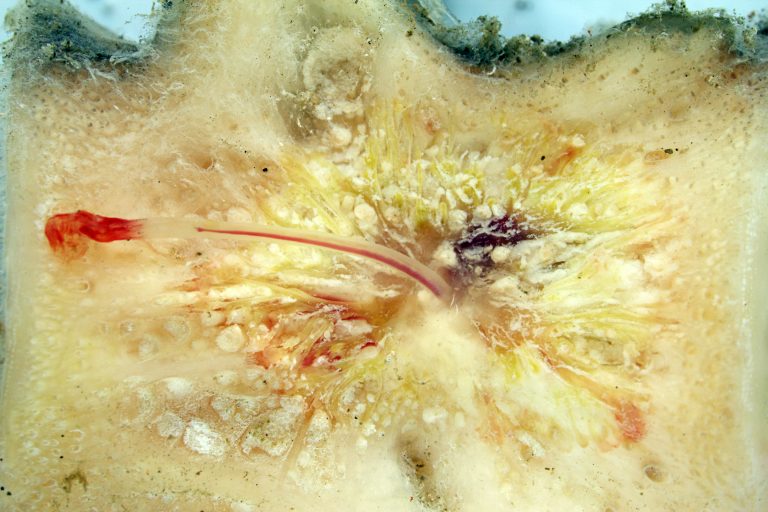
Matriarchal Farmers
In reality, the worms are not eating the bone, but feeding it to bacteria. Bone is mostly made up of a mesh of collagen which binds calcium and phosphate together. The worms secrete acid to dissolve the hard parts in order to, the experts suspect, take the collagen and use it to farm the bacteria. “We have not done the final experiments on the collagen, but we have conducted experiments that prove they make the acid. We know the worm is growing on bacteria,” explains Dr. Rouse. “There’s a special chemical signature from bacteria in the tissue of the worm – isotope examination tells us that the food of the worm must have come from the surface, like a whale, but via the bacteria.”
The seafloor is a huge surface and the worms are not very big. On top of that, they are completely anchored to the bones. Therefore, finding their source of food is another incredible feature of these relentless animals. Every worm digging through a bone is a female spawning about 800 eggs per day, a floating army in search of new targets.

Once an egg lands on top of a bone by chance, something amazing takes place. Humans have the chromosomes XX and XY, which determine the gender of every individual. Some animals, like turtles, get their gender from temperature: female if the weather is hot, male if it is cold (called environmental sex determination). Bone-eating worms take a completely different approach: “We think that if the larvae lands on a bone, it becomes a female, but eventually a bone will have several females growing in it, and the new larvae coming in have no room to land on the bone, and so they will become males through a hormone provided by the female,” explains Dr. Rouse. Basically, any egg that lands on a bone will become female, and any egg that lands on a female will become a male.
The males are dwarfs and live on the female by the hundreds. Dr. Rouse’s team calls this a harem of males. They conducted an experiment where they left a bone in the water for six months: originally the bones had female worms and no males. After six months, every female was hosting an average of fifteen males. The female will spend her life eating bacteria and turning larvae into males so she can produce thousands of eggs, until the bone sustenance runs out.
Initially, Dr. Rouse found two species of Osedax in California. Today he knows of twenty in that location, and of other species in Japan, Australia, Antarctica, Europe and Brazil. In 2017, he put down bones in Costa Rica – they revealed two of the species from California when he came back to get them in 2018. Now on this cruise the team has just recovered more bones. “We put some bones down three months ago and even after such a short time, they have Osedax,” he marvels. Whether or not these are a new species or one that is already known from further north will have to wait until testing results after the cruise. Dr. Rouse does not anticipate getting bored of these (or any other kind of tube worm) any time soon. After all, he literally wrote the book on them.
